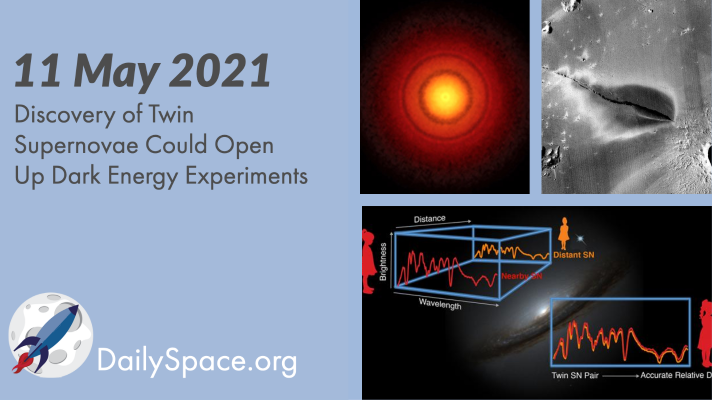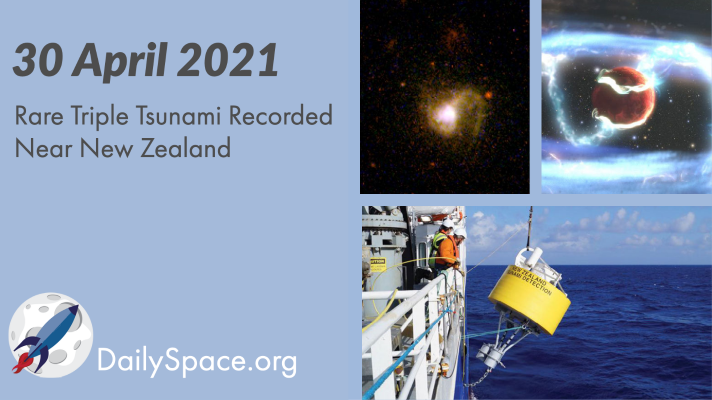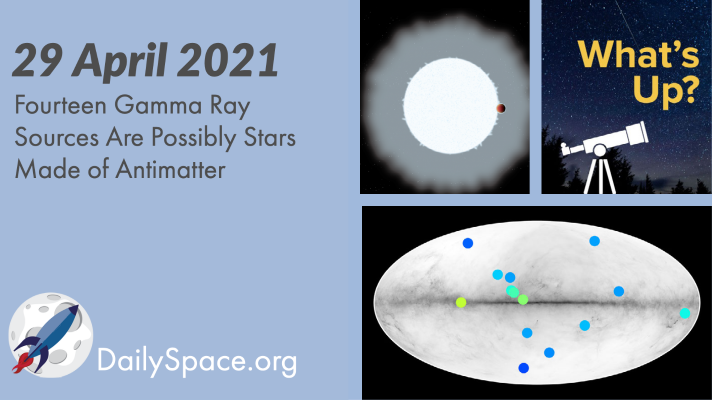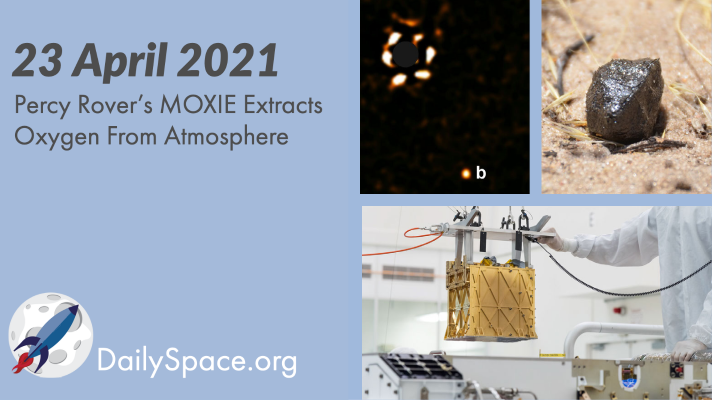
May 12, 2021 | Asteroids, Daily Space, Exoplanets, Galaxies, Mars, OSIRIS-REx, Planets, Star Forming Region, Supernovae, Voyager I & II
Researchers found that among about 50 supernovae, many had nearly identical spectra, paving the way for making more accurate distance calculations. These calculations, in turn, open up the possibility of using supernovae to better search for dark energy. Plus, OSIRIS-REx, Voyager I, planetary formation, and volcanoes on Mars.

May 7, 2021 | Active Galaxies, Earth, Exoplanets, Moon, Spacecraft, Star Forming Region, Supernovae, Very Large Array
Researchers find that the “oddball supernova” of a curiously cool, yellow star was lacking the hydrogen content expected, “stretching what is physically possible.” Plus, finding potentially habitable planets, a gamma-ray burst, ash clouds, and a new lunar map in this week’s What’s Up.

May 3, 2021 | Astrobiology, Daily Space, Earth, Exoplanets, Galaxies, Mars, The Sun, Venus
On March 5, 2021, three separate, large earthquakes occurred within hours of each other near New Zealand, and all three produced a tsunami. The resulting changes in wave height were recorded with special buoys. Plus, a radar blackout at Mars, a giant planet growing, small galaxies in the early Universe, and what even is a day?

Apr 30, 2021 | Asteroids, Daily Space, Exoplanets, Mars, Milky Way, Moon, Sky Watching, Stars
Gamma rays given off by fourteen different sources in our sky could be a sign of the existence of antistars, leading to the potential for breaking the standard cosmological model. Plus, nano dust, the HI-SEAS experiment, hydroxyl at an exoplanet, and this week’s What’s Up.

Apr 30, 2021 | Crewed Space, Daily Space, Exoplanets, Mars, Random Space Fact, Rockets, ROSCOSMOS, Soyuz, Space China, Space History, Spacecraft, SpaceX
This week, the entire team gathers to share stories on Crew-2, another OneWeb launch, NROL-82, and a Chinese launch. Plus, this week in rocket history, we look back at the launch of NASA’s TESS on April 18th, 2018.

Apr 26, 2021 | Asteroids, Daily Space, Exoplanets, Mars 2020, Perseverance, Physics, Stars
In another first for NASA’s Perseverance rover, a cube-shaped instrument called MOXIE, or Mars Oxygen In-Situ Resource Utilization Experiment, has successfully converted some of Mars’ atmospheric carbon dioxide into oxygen. Plus, a wild roundup of stories including exoplanets, sky maps, fast radio bursts, meteorites, and the problem with symmetry.








 We record most shows live, on Twitch. Follow us today to get alerts when we go live.
We record most shows live, on Twitch. Follow us today to get alerts when we go live.